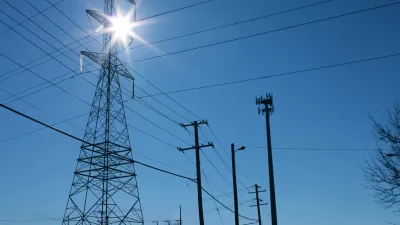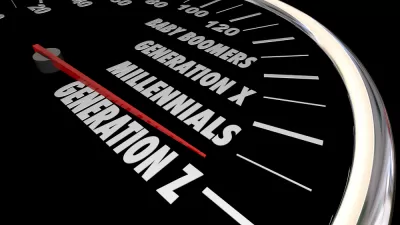Young adults, according to a deep dive analysis by Brookings Metro demographer William Frey, were a key demographic group responsible for stopping the red wave that most polling predicted as the likely outcome of last month's midterm elections.

William H. Frey, a senior fellow with Brookings Metro, analyzed the midterm elections both before and after November 8. He wrote on November 18 in his deep dive on the outcome:
In order to better understand how Democrats avoided big losses in the 2022 midterms, this analysis examines Democratic minus Republican (D-R) vote margins using 2022 exit polls data and those of earlier elections compiled by Edison Research.
They show that among people voting for House of Representatives candidates, key demographic groups that traditionally favor Democrats (young people, women, racial minorities, and white female college graduates) played a significant role.
The group that stands out are “young adults,” observes Frey, when compared with the “2020 presidential election or previous midterms.”
Avoid ‘Nationalizing’ the Election
Frey makes the same point that Nate Cohn, The New York Times’s chief political analyst, made about the importance of looking at the election results statewide, thus avoiding the tendency to “nationalize” election results.
Cohn wrote on November 11, well before many of the election results were finalized (Italics added):
The results by state only add to the uncommon picture. In our era of increasingly nationalized elections, trends in one part of the country tend to play out in others as well. Instead, this year we saw a split: Republicans fared exceptionally well in some states, including Florida and New York. In others, like Michigan or Pennsylvania, Democrats excelled.
Similarly, Frey wrote, “While most national demographic voter patterns hold, there are key differences across states. Some of these are accentuated in elections with strong partisan results, such as the gubernatorial contests in Pennsylvania and Florida.”
Age Matters
Cohn went on to expound on two key issues: abortion and ‘democracy’—how they played differently on a state basis. The former also played a significant role in Frey's analysis on the voting patterns of demographic groups.
Among the youngest Americans, Democrats have held an advantage in votes for House of Representatives candidates in every midterm or presidential election since the late 1990s. Yet in 2022, the 18- to 29-year-old age group (made up of Gen Z and the youngest millennials) showed an even more pronounced shift toward Democrats.
Especially important to this youth vote is the contribution of young women. Prior to last week’s election, there was much speculation about how the Supreme Court’s decision to overturn Roe v. Wade would affect women’s voting patterns. The new exit polls show that 47% of female voters felt angry about that decision, and 83% of those women voted for a Democratic candidate.
On the other end of the political and age spectrum, “[a]mong voters over age 45, both men and women were less likely to vote Democratic in 2022 than in 2020,” adds Frey. “Thus, a good part of the women’s vote for Democrats was accentuated by young people.”
Future Voting Patterns
In the first of three concluding points, Frey writes:
Still, the demographic patterns revealed by these exit polls hold some expectations for the future. Perhaps most important is the strong Democratic support from young people—men, women, and people of color—to a level that most analysts did not predict. For a variety of reasons—including concerns about abortion, inclusivity, democracy, and education—it seems likely that Gen Z and young millennials will become the future core of the Democratic coalition.
And notes in his final paragraph:
In short, these midterms revealed Democrats’ strength among new generations of voters and demographic groups that will continue to grow in size [pdf], while Republicans continue to do well with older voters and white men without college educations.
More on the Midterms on Planetizen:
- 2022 Midterm Election Results for Land Use, Transportation, and the Climate, November 9, 2022
- Western Voters: Yes to Conservation, No to Extremism, November 29, 2022
- The Elections and Transportation, November 8, 2022
- No Bragging Rights for Passing the Infrastructure Act? November 8, 2022
- The Republican Energy and Climate Agenda, November 6, 2022
FULL STORY: Midterm exit polls show that young voters drove Democratic resistance to the ‘red wave’

Study: Maui’s Plan to Convert Vacation Rentals to Long-Term Housing Could Cause Nearly $1 Billion Economic Loss
The plan would reduce visitor accommodation by 25,% resulting in 1,900 jobs lost.

North Texas Transit Leaders Tout Benefits of TOD for Growing Region
At a summit focused on transit-oriented development, policymakers discussed how North Texas’ expanded light rail system can serve as a tool for economic growth.

Using Old Oil and Gas Wells for Green Energy Storage
Penn State researchers have found that repurposing abandoned oil and gas wells for geothermal-assisted compressed-air energy storage can boost efficiency, reduce environmental risks, and support clean energy and job transitions.

Private Donations Propel Early Restoration of Palisades Playground
Los Angeles has secured over $1.3 million in private funding to restore the Pacific Palisades playground months ahead of schedule, creating a modern, accessible space that supports community healing after recent wildfires.

From Blight to Benefit: Early Results From California’s Equitable Cleanup Program
The Equitable Community Revitalization Grant (ECRG) program is reshaping brownfield redevelopment by prioritizing projects in low-income and environmental justice communities, emphasizing equity, transparency, and community benefits.

Planting Relief: Tackling Las Vegas Heat One Tree at a Time
Nevada Plants, a Las Vegas-based nonprofit, is combating the city’s extreme urban heat by giving away trees to residents in underserved neighborhoods, promoting shade, sustainability, and community health.
Urban Design for Planners 1: Software Tools
This six-course series explores essential urban design concepts using open source software and equips planners with the tools they need to participate fully in the urban design process.
Planning for Universal Design
Learn the tools for implementing Universal Design in planning regulations.
Ascent Environmental
Borough of Carlisle
Institute for Housing and Urban Development Studies (IHS)
City of Grandview
Harvard GSD Executive Education
Toledo-Lucas County Plan Commissions
Salt Lake City
NYU Wagner Graduate School of Public Service





























